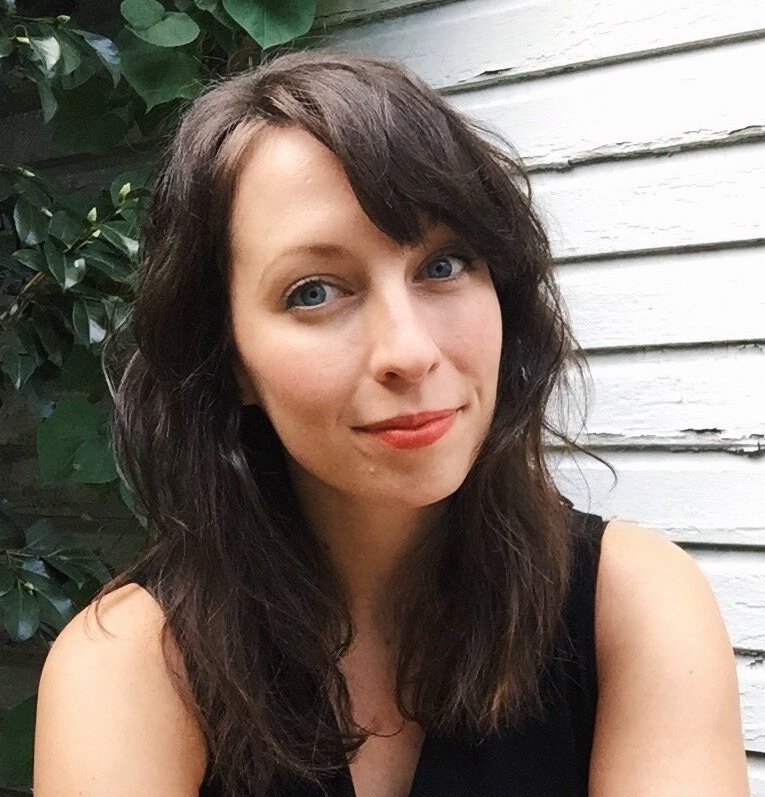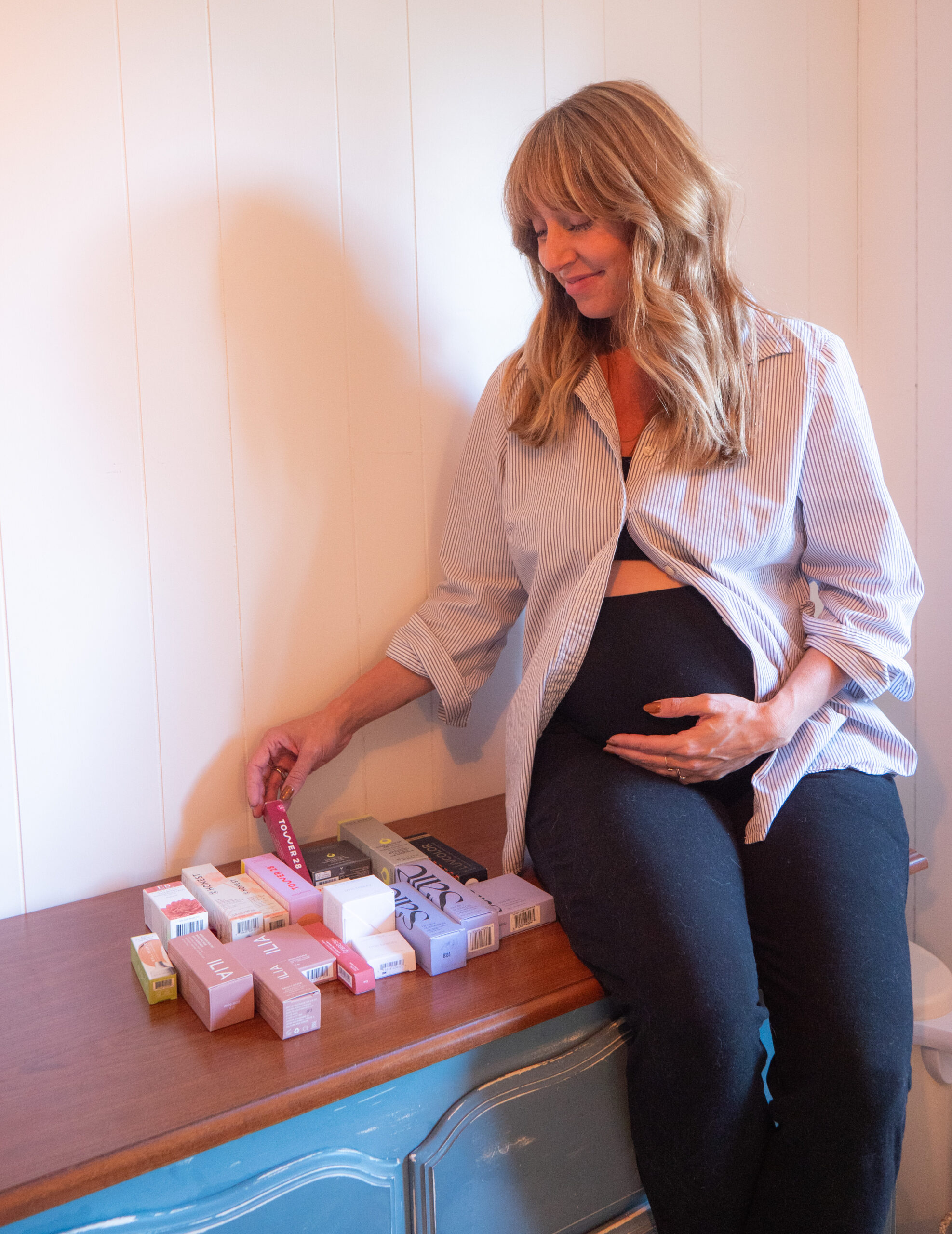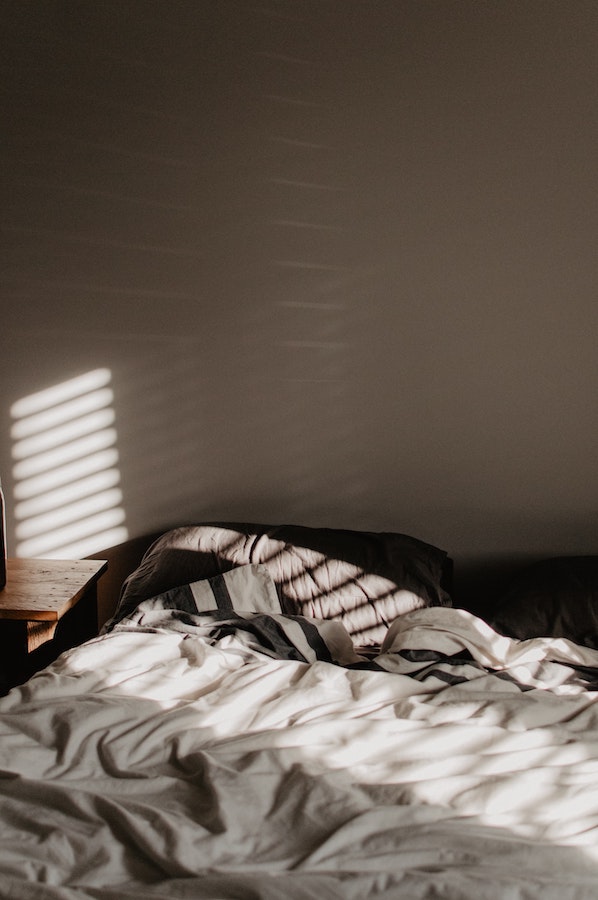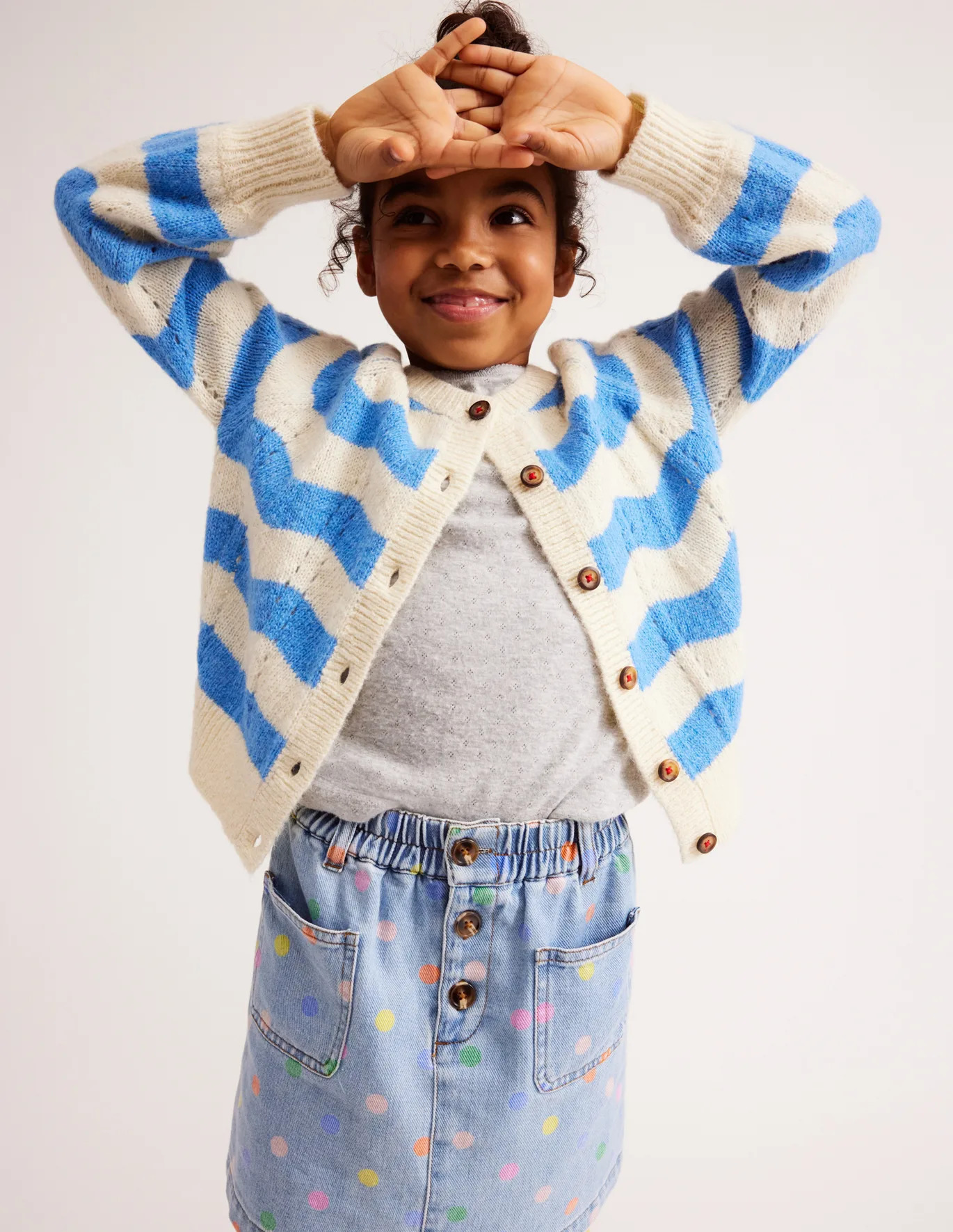
How I Found Death Positivity After Experiencing Loss
Earlier this year, my daughter looked at me and said, “Mommy, are you going to die one day?”
She had that look of hope and terror she gets when she is thinking about something scary but knows I will tell her how to make it alright. Bad dream? Don’t worry honey, it’s not real. Heard a weird sound in the night? Just the radiator, or probably our cat practicing his nightly gymnastics routine. I try to take her fears seriously so that she will take my explanations to heart, and she usually trusts me enough to go back to her room on her own, choosing to believe what I’ve told her: She is safe, even in the dark.
“Earlier this year, my daughter looked at me and said, ‘Mommy, are you going to die one day?'”
Obviously, I wasn’t going to be able to offer her such an easy response this time. “Yes,” I said, trying to keep my tone as calm and matter-of-fact as possible. “Everybody dies one day.” She was shocked, her eyes going wide. “Without me?” she asked. “You’ll die without me?”
“Well,” I said, trying to stay neutral, even as I watched the fear in her eyes grow. “No one can know when they will die, but usually parents die before their kids.” The last shred of bravery holding her together long enough to get this information fell away, and my daughter launched herself at me, sobbing.
“I don’t ever want to be without you,” she told me through tears. “Promise me you won’t die.”
I held her and rocked her, told her I loved her. “I can’t promise you that, baby,” I said. And then I let myself cry with her.
Whoa, a mom friend said later on a group text. Brutal! I think I would have promised not to die lol.
Oh man, we haven’t had that talk yet, another said. When our dog died we just said he’d been really old and tired and gone to sleep.
How’s she doing? Another mom asked. Is she still upset? I feel like I would be tempted to start talking about Heaven. Or to say it won’t happen until I’m really really old.
I hadn’t really articulated to myself how I was going to handle the talk about death with my kid. My husband and I have talked about how we want to handle other big topics like gender, sex, bullies, religion, race, disability, and body image, but somehow death slipped through the cracks. Which isn’t really a surprise — that’s been my experience with how death is treated culturally, too. The only time I’ve heard it addressed openly is when someone dies. Otherwise, talking about how we feel about our mortality is simply not done.
“My husband and I have talked about how we want to handle other big topics like gender, sex, bullies, religion, race, disability, and body image, but somehow death slipped through the cracks.”
This feels like a fairly enormous flaw in the plan. If there is anything we can count on having in common with absolutely every other human being on the planet, it is the fact that we are all going to die. Not talking about it seems not only like a missed opportunity for essential connection, but also an active disservice to the lifelong reckoning we all must go through with our human condition. And it had never been more apparent to me than in that moment, sitting there holding my four-year-old while she cried and told me that she didn’t want me to die.
Living with loss
I have always felt more comfortable talking about death than most people in my life, and this is undoubtedly due to my exposure. My father died from AIDS when I was fourteen, which was a lesson in the amorphous, unpredictable nature of grief that grows and changes with me to this day. I’ve also said goodbye to all four of my biological grandparents, as well as my stepfather’s parents. One of my bosses died quite unexpectedly during the pandemic, and a childhood friend was murdered when we were in our early twenties. I know many women who’ve lost their children, and a close friend died after a brutal battle with cancer the year my daughter was born.
“I have experienced the death of people I know and love at many stages in the course of my life.”
All this to say, I have experienced the death of people I know and love at many stages in the course of my life. But the death that I think was most formative to my worldview happened much, much earlier. Her name was Maya.
In preschool, our teachers sat us in our morning circle to deliver the news. They kept the lights off, speaking in quiet, serious voices. They explained that Maya wouldn’t be coming back to school. I don’t remember the words they used, but I remember that she’d been with her grandmother, who’d also died. The room had the dim, hushed feel of naptime. I remember a feeling of sadness, but I wasn’t afraid. I felt safe.
Maybe it was Maya’s death that began shaping my understanding of mortality with a frankness that simply wasn’t otherwise present in our culture. Maya was a classmate, a peer. In my first experience with death, I learned that it can happen to anyone, even children.
“In my first experience with death I learned that it can happen to anyone, even children.”
I accepted this the way I did all other information at the time — wholly, and without much questioning. Being a child is like this, constantly absorbing the facts of the world into a mental library that eventually becomes a worldview.
All people, I understood, will die. Also, the rain was wet, you weren’t allowed to pet dogs you didn’t know, and if you touched the stove when it was on, you’d burn your hand. These were just the terms of the life I was living.
Sometime later, the fear came. It was after bedtime, and I was snuggled up in my jungle-themed comforter, staring at the ceiling from the top bunk in the room I shared with my little brother. Without warning, it occurred to me that my mother would one day die. But instead of the usual acceptance of this as an abstract concept, I was all at once aware of the practical applications of this reality: She wouldn’t be here with me anymore.
“It was an impossible idea, a terror unlike any I’d felt before. How could I live without my mom?”
I wouldn’t be able to call her, see her, or find her bodily in any way. The familiar material experiences of her — her voice, her smell, the way her hair felt — wouldn’t exist in the world anymore, living instead only in my memory. It made my heart race. It was an impossible idea, a terror unlike any I’d felt before. How could I live without my mom?
For a long time, I spent every night trying to go to sleep without letting my mind wander to this thought. Which was, of course, just another way of thinking about it.
I was raised in a Methodist church, and so the concept of death had been mostly introduced to me through that lens: Though the body will die, there is a life after, and it is called Heaven. My church didn’t dwell on hell, or even on death itself. Instead, we focused on the idea of being reunited with our loved ones and ancestors, of eternal life. Focus on this nice idea instead, the message seemed to be. Don’t dwell on the empty hole in the world when you could imagine this serene sky utopia. Doesn’t this make you feel better?
“The fear of losing a person you love isn’t about the afterlife at all, but about the fear of living without them.”
This never really worked for me. And it had nothing to do with belief or faith at all — what happens after life is simply a different question. The fear of losing a person you love isn’t about the afterlife at all, but about the fear of living without them.
It’s about being left behind with nothing but your grief, in a world determined to treat it like nothing more than a bad cold you’ll simply get over one day.
Spoiler: You don’t get over grief. You learn to live with it.
Death positivity
I first came across the term “death positive” sometime during the pandemic, amidst the many hours spent doom-scrolling Instagram while in lockdown.
Aside from advocating for the de-stigmatization of conversations about death in daily life, the movement also emphasizes using more frank and positive language, encourages end-of-life planning, campaigns for the right for families to care for the bodies of their loved ones, and works to improve the environmental impact of the funerary industry and death practices.
“Aside from advocating for the de-stigmatization of conversations about death in daily life, the movement also emphasizes using more frank and positive language.”
All of these things sound great to me! I have personally never benefited from ignoring or hiding from my fears, finding that it only makes them grow into a shapeless, even more terrifying monster in my proverbial closet. But if we live in a culture that avoids talking about death until confronted with it, then how can we expect our relationship with death to be anything but terrifying?
Everyone who lived before us died, and everyone who comes after us will die, too. Why do we act as though this universal fact about our species is some furtive, awkward topic? How can we live our lives with intention and gratitude without the full context of what a life even is? To be alive is a temporary state of existence, a moment in time and space that will end. And if we allowed ourselves to talk about this openly, how might we be able to heal the seemingly insurmountable chasms of difference between us?
“Why do we act as though this universal fact about our species is some furtive, awkward topic?”
Death positivity isn’t about glorifying death or feeling excited about dying. It’s simply a willingness to talk about death with acceptance, and to make room for our feelings without judgment. It’s about honesty, and about letting ourselves feel what we feel when we face the unknown.
Accepting death isn’t an achievement. There isn’t an easy-to-follow bulleted list, or a clear, single outcome we can arrive at to say we’re finished, that we’ve done it. It’s an ongoing, organic, ever-shifting process that will change and re-introduce itself to us all throughout our lives.
I have always tried to be as honest with my kid as I can be. I want her to have room to develop critical thinking skills and to learn how to form her own opinions. And I want her to trust me, to know that even when something is hard or uncomfortable, I will always tell her the truth. So even without a plan, I followed my usual North Star of honesty with my daughter when she asked me if I was going to die. I found myself avoiding promises of Heaven because she wasn’t worried about where I was going to go, just that I wasn’t going to be there with her. I avoided tying death exclusively to old age because of Maya. So I just tried to tell the truth, and the truth about her question felt sad and scary. If I couldn’t make her feel safe about the reality of our human condition, I could provide a safe space to have feelings about it. That feels pretty positive to me.
Normal, everyday death
It’s important to find ways to have these conversations in our lives during the less emotionally charged periods, such as when confronted with the death of a loved one. We will all find different words to talk about death that align with our beliefs, spiritual practices, and family culture. Incorporating a more death-positive approach to these conversations will look different for everyone, but here is one way my daughter and I have been doing it.
“It’s important to find ways to have these conversations in our lives during the less emotionally charged periods, such as when confronted with the death of a loved one.”
Our neighborhood has an enormous cemetery with rolling hills and beautiful landscaping around several wide loops of road that people use to walk, run, and ride bikes. The trees burst with seasonal growth and people lounge on the grassy, plotless sections with picnic blankets and their dogs. Families teach their kids how to ride bikes there and people train for marathons. The gravestones are regularly adorned with carnations and Jack-o-Lanterns in the fall, Christmas roses and pine wreathes in December, and pastel hyacinths, lilies, and tulips every spring.
When I first moved here, I was a little jarred by the activity, and wondered if it wasn’t disrespectful for the neighborhood to treat a burial ground as a public park. But I’ve since come to see it as one of the best examples of death positivity I’ve experienced. I started taking my daughter on little outings there, to walk and look and roam, and to see where our conversations take us.
“Over many months, she’s learned slowly and at her own pace about various death practices, simply by asking me questions about the space around us.”
As we wander through the cemetery, my daughter asks me what the stones say. Over many months, she’s learned slowly and at her own pace about various death practices, simply by asking me questions about the space around us. We hunt for fall leaves in every shade of red and orange to make “bouquets,” or crunch through frozen edges of dirt at the roadsides, kicking the tiny crystal shards of ice into the snow. We’ve watched funeral processions and crowds gather beneath green tents over a new grave, and we’ve looked for the family of deer who’ve taken up residence nearby, trying to spot them napping between the trees and headstones.
It’s usually afternoon, and we’re walking together in a safe space with other families, some of them visiting graves of their loved ones. It’s quiet and we’re surrounded by the bounty of the natural world. It couldn’t be a better place to learn about death — this beautiful place that’s still so very full of life.
Stephanie H. Fallon is a Contributing Editor at The Good Trade. She is a writer originally from Houston, Texas and holds an MFA from the Jackson Center of Creative Writing at Hollins University. She lives with her family in the Blue Ridge Mountains of Virginia, where she writes about motherhood, artmaking, and work culture. Since 2022, she has been reviewing sustainable home and lifestyle brands, fact-checking sustainability claims, and bringing her sharp editorial skills to every product review. Say hi on Instagram or on her website.




